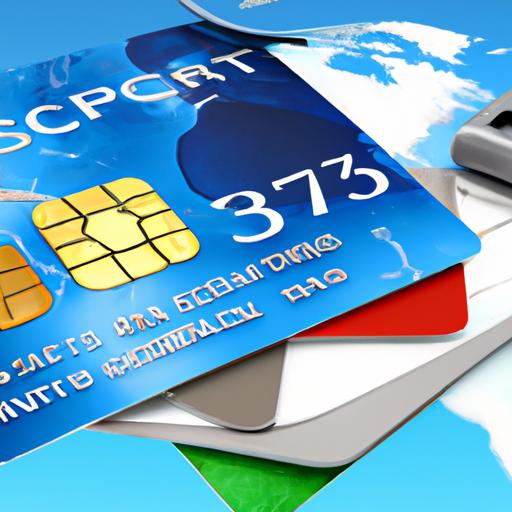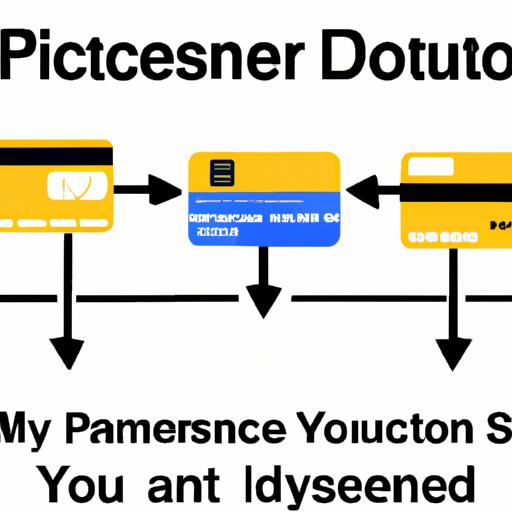Demystifying the Payment Card Industry Data Security Standard (PCI DSS) for Consumers
Are you tired of feeling like a confused fish in a sea of technical jargon when it comes to the Payment Card Industry Data Security Standard (PCI DSS)? Well, take a deep breath and get ready to dive into the enlightening world of PCI DSS, where we’ll demystify this perplexing code for you, the everyday consumer. Get your snorkels ready, folks, because it’s time to make sense of the seemingly impenetrable fortress that guards our precious payment data!
Understanding PCI DSS: Protecting Your Payment Card Information
When it comes to protecting your payment card information, knowledge is power. The Payment Card Industry Data Security Standard (PCI DSS) may sound like a complicated concept, but it’s actually designed to ensure that your personal and financial data remains secure when you shop or make transactions online. Understanding PCI DSS is crucial for every consumer in today’s digital age.
So, what exactly is PCI DSS? It is a set of security standards established by major credit card companies, including Visa, Mastercard, American Express, Discover, and JCB. These standards are designed to protect consumers like you from the ever-evolving threat of identity theft and credit card fraud. Compliance with PCI DSS is mandatory for any business that accepts credit card payments, ensuring that your payment card information is processed and stored securely.
- Secure network: PCI DSS requires businesses to maintain a secure network infrastructure by implementing firewalls and encryption.
- Regularly update security systems: Businesses must stay up to date with the latest security patches and ensure that their systems are protected against known vulnerabilities.
- Protect cardholder data: PCI DSS emphasizes the need for businesses to safeguard cardholder data through encryption and strict access controls.
- Regularly monitor and test networks: The standard requires businesses to regularly monitor and test their networks, ensuring that potential vulnerabilities are identified and addressed promptly.
By familiarizing yourself with PCI DSS and its requirements, you can make more informed decisions about where you trust your payment card information. It’s important to look for businesses and online retailers that demonstrate compliance with these standards to ensure the security of your personal and financial data. Remember, your payment card information is valuable – so protect it by partnering with businesses that prioritize your security.

Breaking Down the Jargon: Decoding the Security Measures
What is PCI DSS?
It sounds like a mouthful, but fear not, we’re here to break it down for you. The Payment Card Industry Data Security Standard (PCI DSS) is a set of security standards established by major credit card companies to ensure that businesses handling customer payment card data do so securely. This means that when you make a payment online or at a store, you can have peace of mind that your financial information is being protected.
But what does PCI DSS actually involve? Let’s dive into the details:
1. Building and Maintaining a Secure Network
The first step in achieving PCI DSS compliance is creating a secure network infrastructure. This involves implementing firewalls, regularly updating anti-virus software, and encrypting data transmissions to prevent unauthorized access to sensitive information.
2. Protecting Cardholder Data
Every time you swipe your card, your cardholder data enters into the equation. PCI DSS requires businesses to adopt measures such as encryption and tokenization to protect this data. Encryption ensures that even if hackers manage to intercept the data, it remains unreadable, while tokenization replaces cardholder data with a unique identifier, keeping the actual data safe.

How to Safeguard Your Data: Key Tips for Consumers
In this digital age, the security of our data is of utmost importance. We rely on our payment cards for everyday purchases, but are we truly safeguarding our valuable information? Let’s demystify the Payment Card Industry Data Security Standard (PCI DSS) and uncover key tips that consumers can implement to protect their data.
Stay updated on PCI DSS compliance: The PCI DSS is a set of security standards designed to protect payment card data. Look for businesses that display the PCI DSS compliance logo on their websites or establishments. This logo assures consumers that the business is taking the necessary precautions to safeguard their data.
Be cautious of phishing scams: Phishing emails and text messages are unfortunately common these days. Stay vigilant and do not click on suspicious links or provide personal information. Remember, your bank or payment provider will never ask for sensitive information via email. If in doubt, contact them directly to verify the authenticity of the request.
Use strong, unique passwords: We all know this one, but it’s worth repeating. Create strong, complex passwords for your online accounts. Avoid using easily guessable information such as your birthdate or pet’s name. Additionally, it’s crucial to use different passwords for each account to minimize the impact of a potential data breach.
Enable multi-factor authentication: Adding an extra layer of security to your accounts is always a good idea. Enable multi-factor authentication where available, so even if someone manages to get hold of your password, they still won’t be able to access your data without the second factor, such as a unique code sent to your phone.
By following these key tips, you can take control of your data security and decrease the chances of falling victim to malicious activities. Remember, safeguarding your data is a continuous effort in this ever-evolving digital landscape. Stay informed, take action, and protect what’s important to you!
Stay Ahead of Cybercriminals: Best Practices for Securing Your Transactions
In today’s digital age, securing your online transactions has become more important than ever. Cybercriminals are constantly finding new ways to exploit vulnerabilities and steal sensitive information. However, by staying informed about the best practices for securing your transactions, you can stay one step ahead of these cybercriminals.One of the most significant tools in the fight against cyber threats is the Payment Card Industry Data Security Standard (PCI DSS). This industry standard provides a set of guidelines and requirements designed to ensure the security of cardholder data. As a consumer, it’s essential to understand the basics of PCI DSS and how it can protect your transactions. Here are a few key points to demystify this standard:
- Implement strong passwords: Using easily guessable passwords is like leaving your front door wide open for cybercriminals. Make sure to use a combination of letters, numbers, and special characters for your passwords. Avoid using common phrases or personal information that could be easily guessed. Remember, the longer and more complex your password, the harder it is for hackers to crack it.
- Stay vigilant against phishing attacks: Phishing attacks are one of the most common ways cybercriminals try to gain access to your sensitive information. Be cautious of emails, messages, or pop-ups that ask you to provide personal information or click on suspicious links. Remember, legitimate organizations will never ask for your password or personal details through email or text. If in doubt, contact the organization directly through their official website or phone number to verify the request.
To Conclude
And there you have it, folks! We’ve finally peeled back the layers of the mysterious Payment Card Industry Data Security Standard (PCI DSS) and shed some light on how it affects us, the consumers. So next time you whip out that plastic to make a purchase, you can do it with peace of mind, knowing that your sensitive information is in good hands.
Remember, PCI DSS may sound like a mouthful, but it’s there to protect your data from falling into the wrong hands. From now on, you’ll have a better understanding of what that little padlock icon means when you’re shopping online or the security protocols that retailers have in place.
But don’t let this newfound knowledge go to waste! Share it with friends, family, and everyone you know. Spread the word about PCI DSS and let’s demystify it together. Let’s create a world where every consumer out there can confidently swipe, tap, or shop online without worrying about their financial information being compromised.
So, whether you’re hitting the checkout line at your favorite store, ordering a new gadget online, or booking that long-awaited vacation, remember to look out for those PCI DSS compliant signs. It’s time to take charge of our security, empower ourselves, and shop with peace of mind. Because when it comes to protecting our data, we’re all in this together.
Stay safe, stay informed, and happy shopping, everyone!




